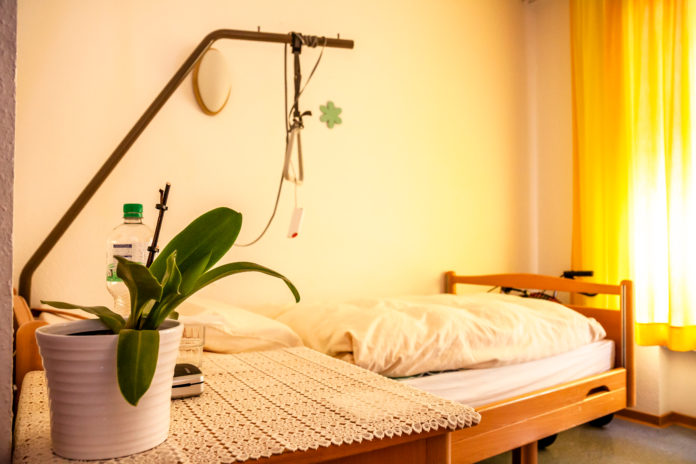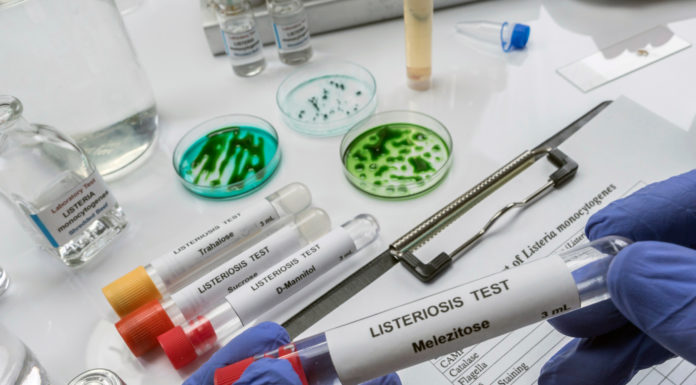“Mommy’s sugar is 500!” was the alert we received on our family chat. The group had been formed by all of the siblings in our family to help keep us updated about the happenings in our lives. But more often than not, it was now being used to communicate about our mother’s fragile health.
When a person’s blood sugar is so high, it means that some illness is infecting the body. Her doctor’s first order of business was to order a blood test. But because my mother was unfortunately bedridden, transporting her to a lab for blood work was a herculean task. Fortunately, thanks to the ingenuity of some people in our Boro Park community who created a mobile lab, we could have the bloodwork done at home. The lab results were highly troubling. Her white blood count was 22,000; a normal white blood count is anywhere from 4,500 to 11,000. A number like that was indicative of a severe infection. My mother was dangerously close to sepsis.
The doctor’s order was clear: Your mother must be hospitalized immediately. In a pre-COVID world, such a directive wouldn’t have been challenged. But the year was 2021, a time when the hospital wouldn’t allow us to be with our mother 24/7. They expected us to leave her, an elderly woman who couldn’t fend for herself, at the mercy of the nursing staff. Even the well-connected askanim we contacted couldn’t guarantee that they would be able to get us in as often as we wished. Once she was hospitalized, they told us, they would work on it.
How could we hospitalize her? Surely she would die. Her condition was very precarious, and even the smallest amount of neglect could prove fatal. And yet, she was in need of hospital care. It was a catch-22. Would keeping her home be a decision we would live to regret? Or would we regret hospitalizing her? The doctor commiserated, saying that if it were his mother he would only hospitalize her as a last resort, but he felt that we were at that point. We debated back and forth for a while, but my father was the final arbiter. As much as we tried to shield him, when life-threatening decisions needed to be made, they were done by him and his rav.
The verdict: my mother couldn’t be left alone for one minute. We would have to get her all the help she needed at home. That was when we were introduced to home hospital care administered by Dr. Rad, an angel in disguise.
Dr. Rad arrived to treat my mother. The first thing he did was to order chest X-rays and a sonogram of her abdomen. He hooked her up to IV antibiotics and assured us that the protocol he would follow was exactly the same as would be done in the hospital. In fact, the treatment she would have gotten in a hospital would have been less aggressive than the drug cocktail she was now getting, because hospitals are bound by certain protocols for the elderly.
We were instructed to monitor her blood pressure, oxygen level and blood sugar on a steady basis. In 24 hours, blood would again be taken to see if there was any improvement. Her doctor called. He didn’t approve of what we were doing, but he agreed to monitor her blood sugar telemedically, and her insulin was adjusted after every reading.
All we could do at that point was daven. It was comforting that my mother was in her own bed surrounded by familiar people and not in a hospital setting, with all of its accompanying smells and sounds.
A few hours later, Dr. Rad came by to administer a new round of antibiotics and to check on her condition. He also ran another blood test to see the effect the medicine was having on my mother’s kidneys, because the dose was so high that it had the potential to be toxic. After examining her thoroughly, he pronounced the situation stable. He did not believe that she was exhibiting any signs of sepsis or that she was in any danger of it.
The following day, her white blood cell count was much improved. It was still dangerously high at 15,000, but it was moving in the right direction. The kidney markers, however, indicated that the antibiotic regimen needed adjustment.
Once again, all the procedures that would have been followed in the hospital were done at home. Dr. Rad paid her a visit and drew some more blood. Her vitals were being monitored all day long and her insulin was being constantly adjusted. Her life was still in danger, but she was stable.
Over the next few days there were ups and downs. On some days, her white blood count was higher and on other days it was lower, and all of the medications she was receiving were carefully calibrated and recalibrated. Dr. Rad was a comforting presence, confident in his treatment protocol even as he walked the tightrope.





















